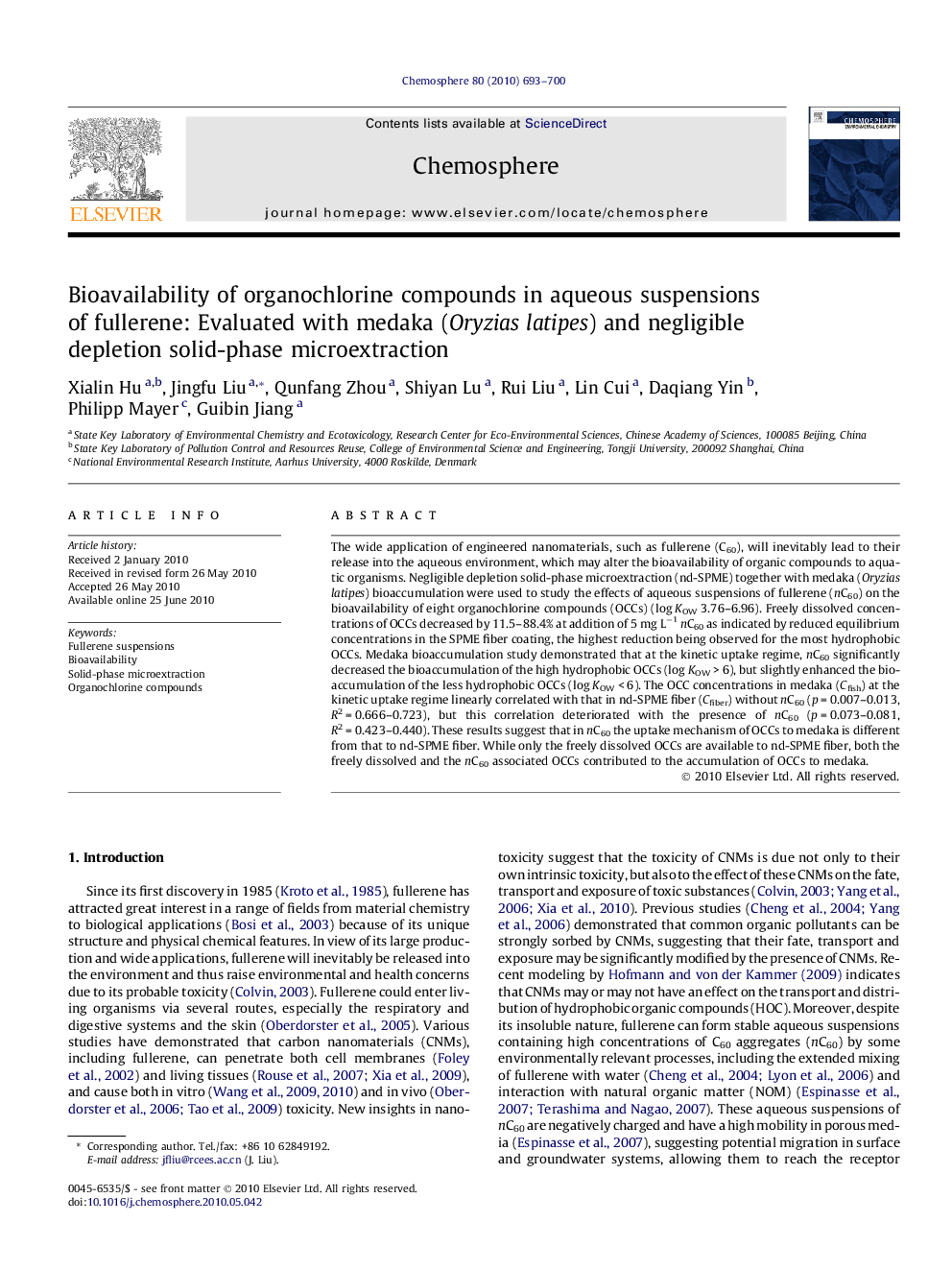| Article ID | Journal | Published Year | Pages | File Type |
|---|---|---|---|---|
| 4411816 | Chemosphere | 2010 | 8 Pages |
The wide application of engineered nanomaterials, such as fullerene (C60), will inevitably lead to their release into the aqueous environment, which may alter the bioavailability of organic compounds to aquatic organisms. Negligible depletion solid-phase microextraction (nd-SPME) together with medaka (Oryzias latipes) bioaccumulation were used to study the effects of aqueous suspensions of fullerene (nC60) on the bioavailability of eight organochlorine compounds (OCCs) (log KOW 3.76–6.96). Freely dissolved concentrations of OCCs decreased by 11.5–88.4% at addition of 5 mg L−1nC60 as indicated by reduced equilibrium concentrations in the SPME fiber coating, the highest reduction being observed for the most hydrophobic OCCs. Medaka bioaccumulation study demonstrated that at the kinetic uptake regime, nC60 significantly decreased the bioaccumulation of the high hydrophobic OCCs (log KOW > 6), but slightly enhanced the bioaccumulation of the less hydrophobic OCCs (log KOW < 6). The OCC concentrations in medaka (Cfish) at the kinetic uptake regime linearly correlated with that in nd-SPME fiber (Cfiber) without nC60 (p = 0.007–0.013, R2 = 0.666–0.723), but this correlation deteriorated with the presence of nC60 (p = 0.073–0.081, R2 = 0.423–0.440). These results suggest that in nC60 the uptake mechanism of OCCs to medaka is different from that to nd-SPME fiber. While only the freely dissolved OCCs are available to nd-SPME fiber, both the freely dissolved and the nC60 associated OCCs contributed to the accumulation of OCCs to medaka.
